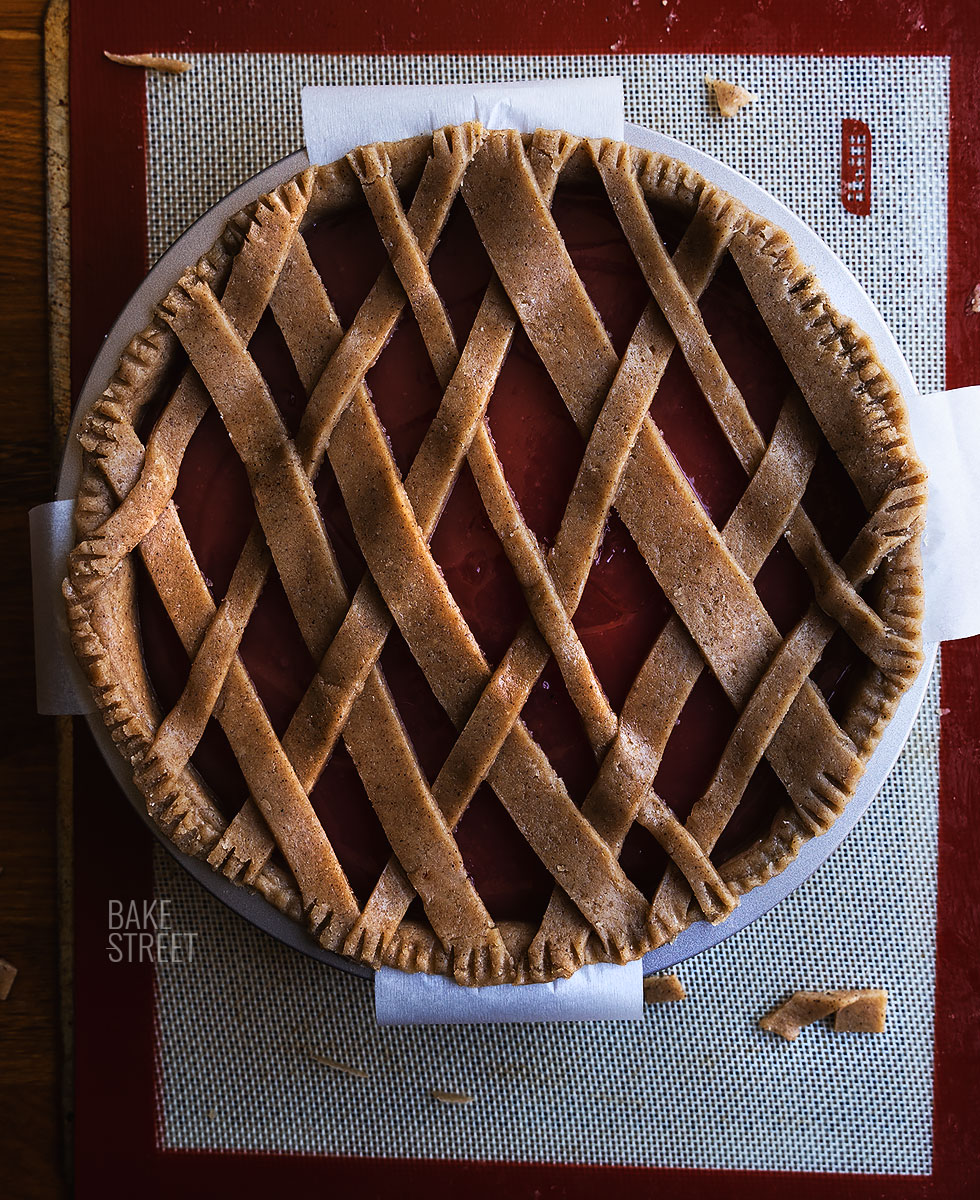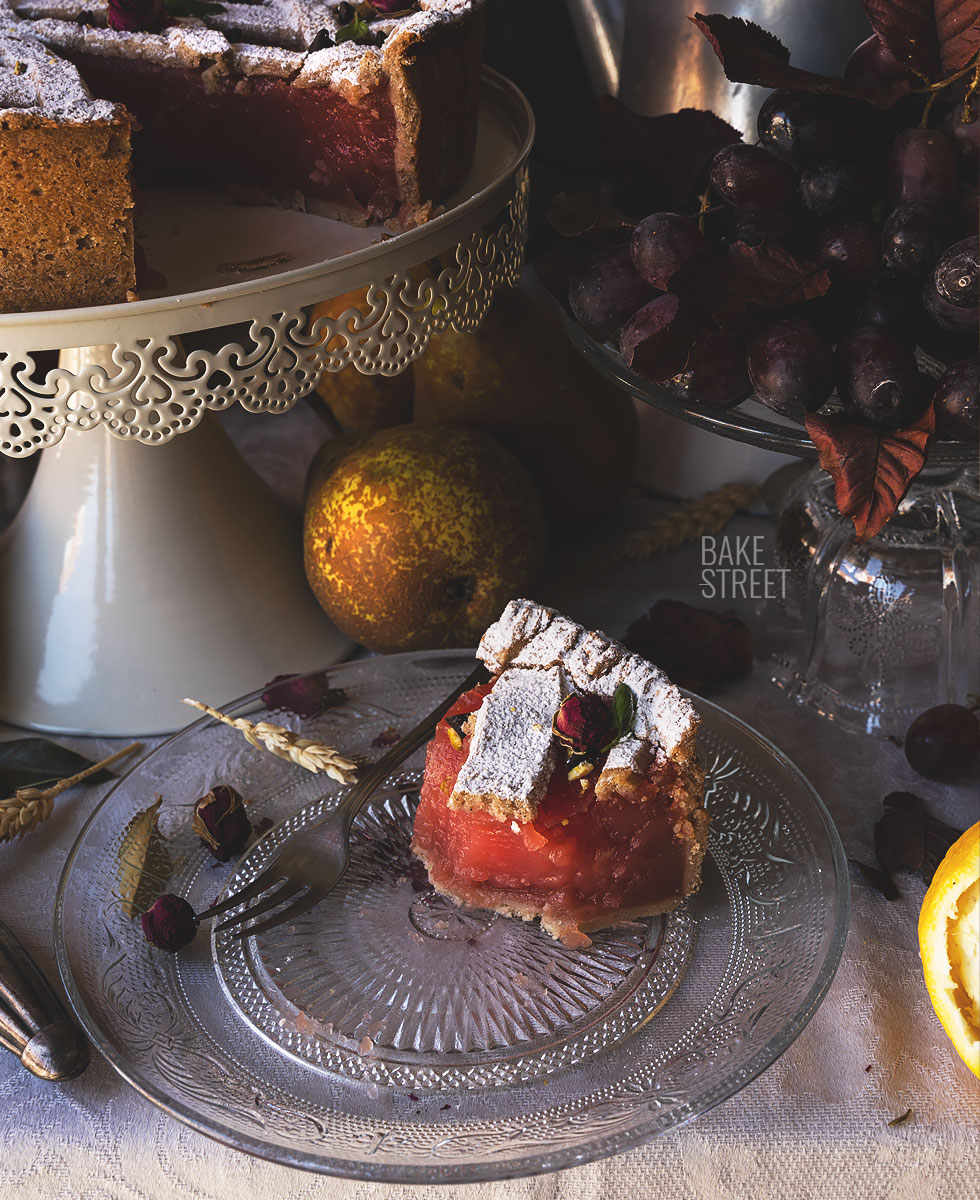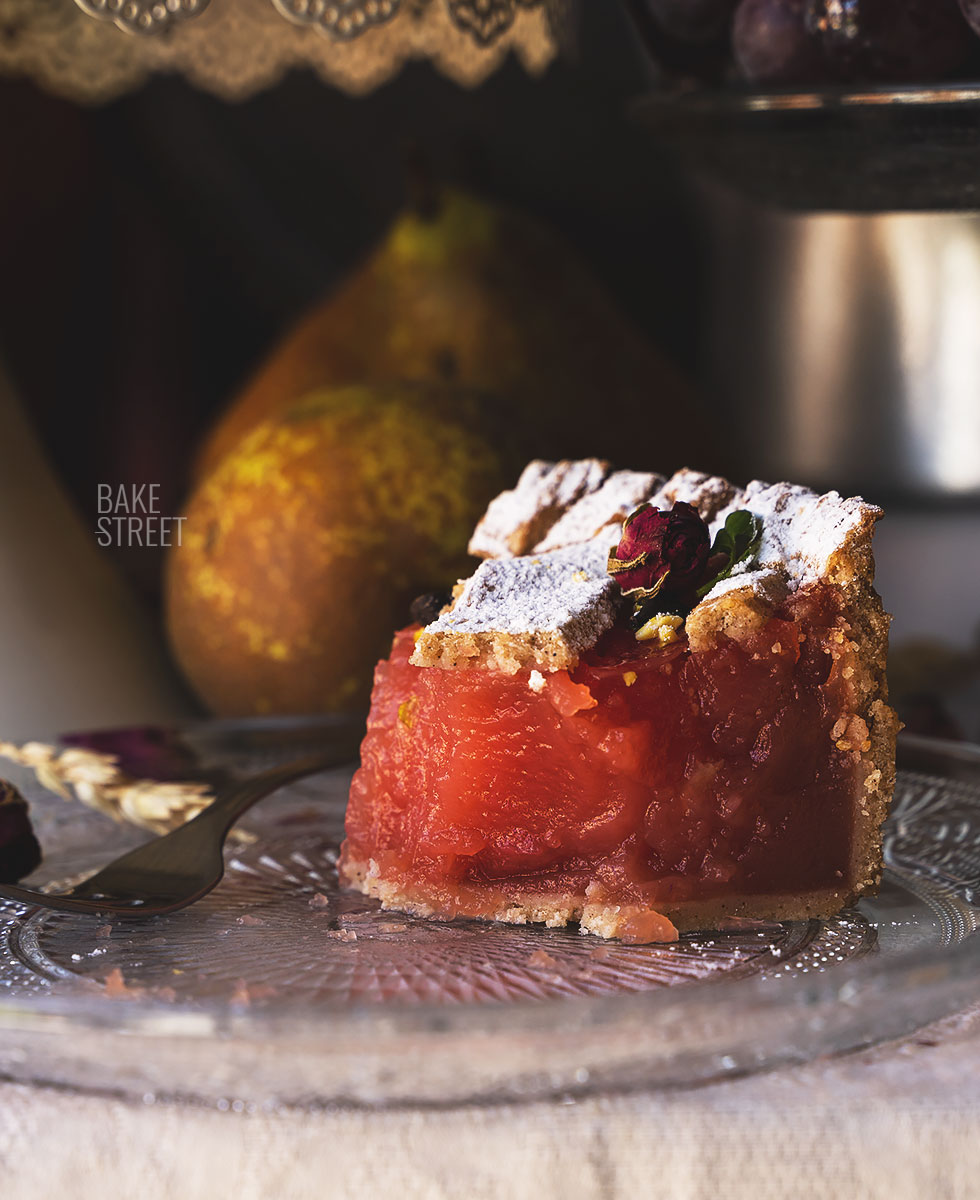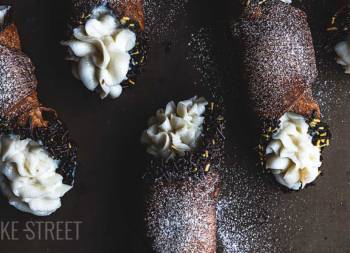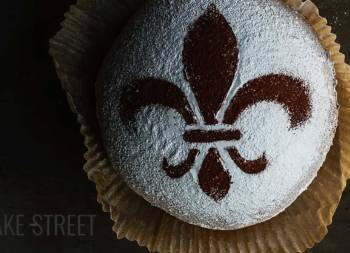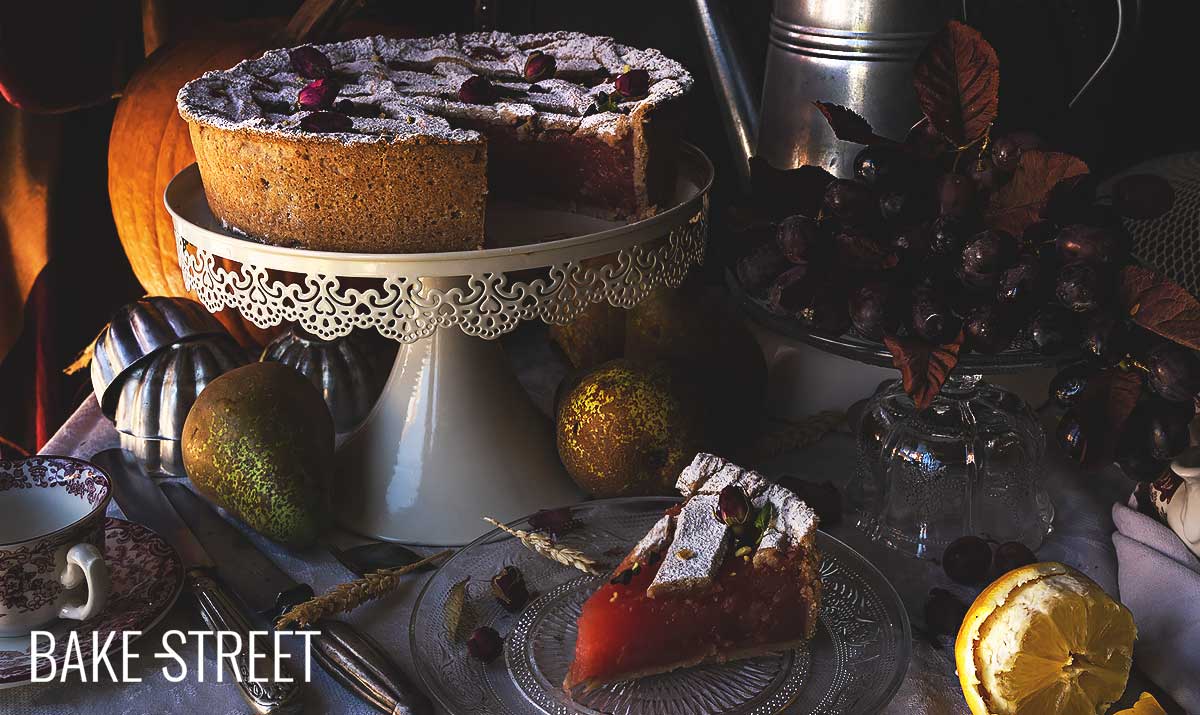
Sicilian Watermelon Tart – Crostata al Gelo di Anguria
Let’s go preparing recipes for the summer, heat and good weather so that we are not caught off guard. The recipe that I bring you today I wanted to do it for a long time, about 2 years, but we know that these things happen many times… You find the recipe in winter, you have to wait for the season of that fruit, then things happen that make it remain in the background and in the end, it is forgotten. This year, as soon as the first watermelons arrived and they already tasted good, I made it. So today I share with you how to make Crostata al Gelo di Anguria – Sicilian Watermelon Tart.
I know, it seems strange, almost impossible, to think that we can elaborate a cake interior (all the filling) with this fruit. At least that’s the first thing I thought when I saw it. I was very surprised and could not imagine what its texture and flavor would be like. I tell you, it is fascinating. Especially if you are lovers of this fruit.
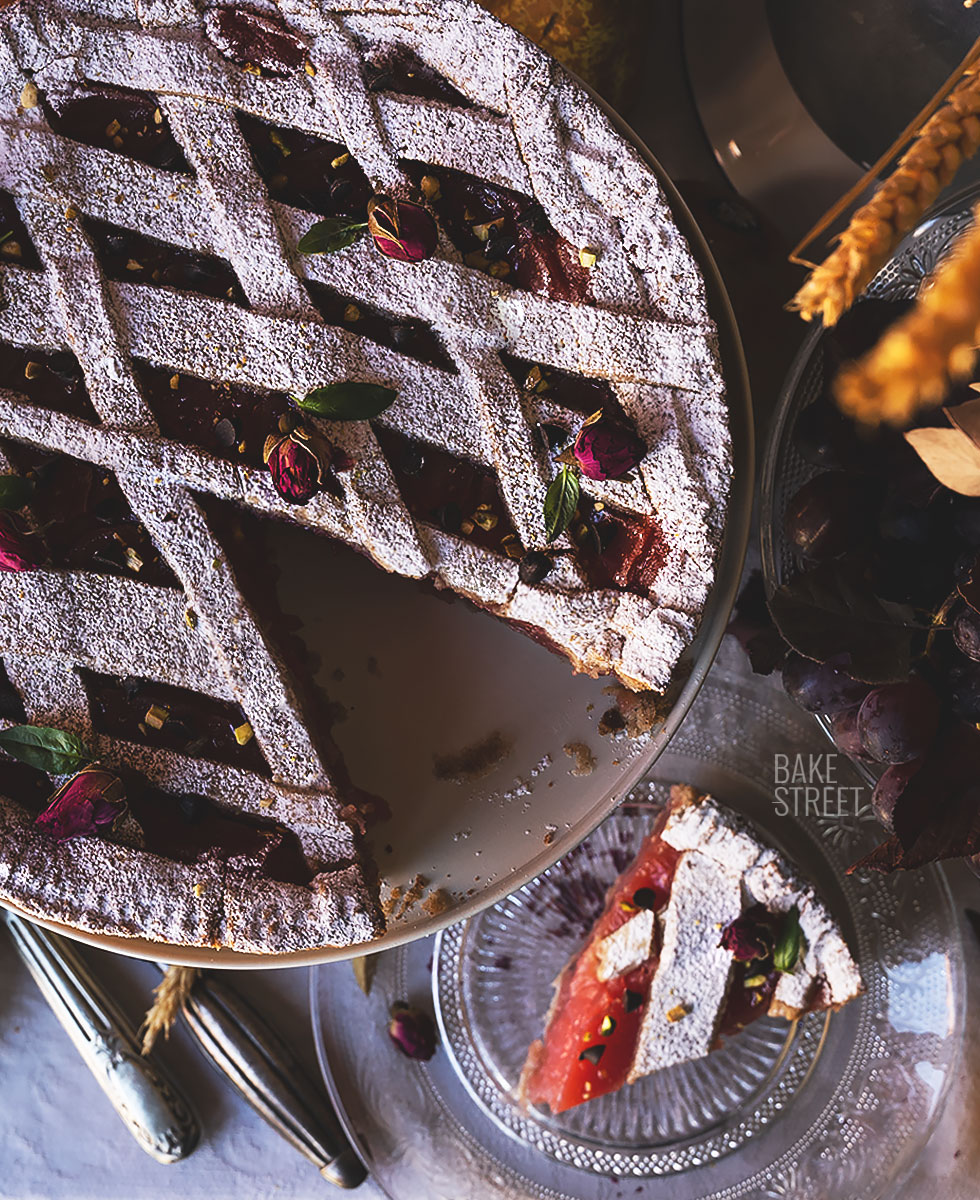
Crostata origin.
Crostata is an Italian recipe with Italian origin that consists of two very simple and easy preparations; pasta frolla and a filling that can be composed of jam, fresh fruit or cream. Some time ago I left you this Crostata di Ricotta that is a real treat.
Pasta frolla or pasta flora is a variant of the famous shortcrust pastry and is used to make pastries such as pastiera napolitana, although it is also very famous and used in Argentina and Uruguay where they make a cake with pasta frolla and quince.
Like the vast majority of recipes and elaborations, they all have an origin, history or legend that surrounds them. It was not going to be less in the case of the crostata.
The first legend about the origin of crostata tells of a beautiful mermaid who had settled in the Gulf of Naples and, every spring, delighted the inhabitants of the coast with her sweet melody. To thank her for her kindness and the beauty of her songs, the inhabitants sent seven maidens who each carried something very valuable as a gift; flour, ricotta cheese, eggs, soft wheat boiled in milk, orange blossom water, spices and sugar.
The mermaid accepted these gifts, very happily, and brought them before the Gods. They created a wonderful cake with all the offerings and she took it back to the villagers.
As we examine each of the ingredients mentioned in the legend, we discover that they lend themselves to various interpretations and, quite possibly, can be linked to the Christian tradition. In fact, ricotta cheese and sugar refer to milk and honey, votive offerings typical of early Christian ceremonies. The egg has always had a strong symbolic value of rebirth and, in the Christian context, of resurrection. Together with orange blossom water, it symbolizes the return of spring and the triumph of life.
So although the legend takes place in a pre-Christian era, the references to Christianity reveal a very different reality.
The second legend is about fishermen. Due to a sudden heavy storm, the fishermen had to stay at sea without being able to return to port. Once they were able to return, they were asked how they were able to survive at sea for so long, to which they replied that they had eaten “Pasta di Ieri” (Yesterday’s Pasta), hence pastiera. It is made from ricotta cheese, eggs, wheat and spices. Pastiera could be interpreted as a symbol of rebirth, since it saved the lives of the four fishermen.

Apart from the legends…
After the year 1000, in Venice, there was a recipe based on pasta frolla that could well be compared to the famous crostata. Sugar imported from the East was used to make it.
The first official recipe was included in a cooking treatise in the 14th century by Guillaume Tirel, known under the pseudonym Taillevent, the famous French cook who served Philip VI, Charles V and Charles VI, author of the famous cooking manuscript “Le Viandier“.
The birth of the modern pastiera is attributed to a nun of the convent of S. Gregorio Armeno, who first used the ingredients provided for this pastry, quite possibly inspired by an earlier recipe. It is to her that we owe the mystical meaning assumed by the pastiera, which made it one of the Easter sweets par excellence, the Resurrection of Christ. For this reason, the pastiera is cooked on Good Friday and consumed during Easter.
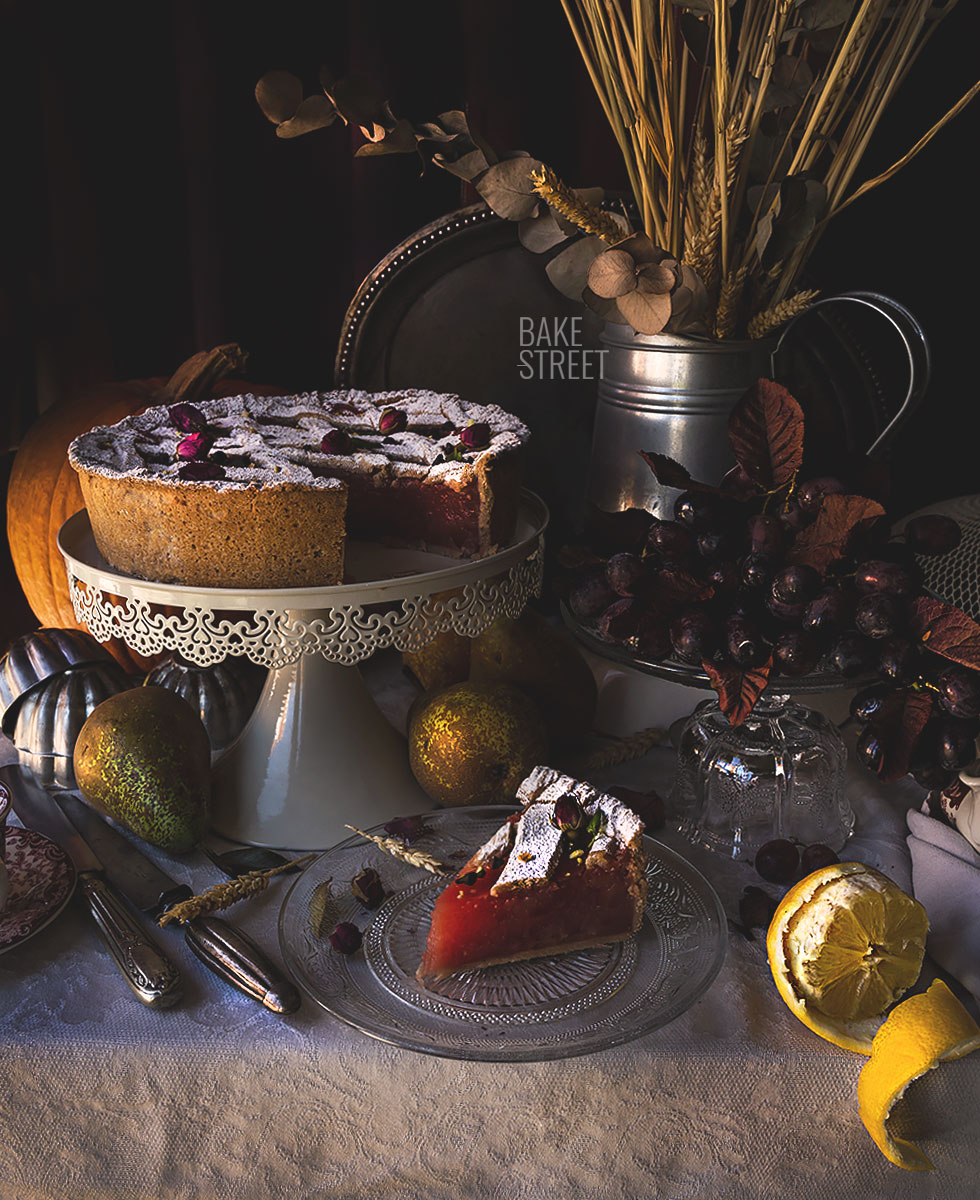
Gelo di Mellone.
Also known as “watermelon frost” is a Sicilian dessert with origins dating back many years. Most probably, this sweet was brought to Sicily by the arbëreshë, a population of Albanian origin that settled in the western part of the island, near Palermo. To this day, they still reside there and are called Albanians of Italy or Italo-Albanians.
Other sources claim that this sweet may have Arab origin due to the presence of jasmine and pistachios.
This sweet is traditionally prepared in Palermo during the month of July, to celebrate the feast of Santa Rosalia, patron saint of the city. In other parts of the region, it is prepared on the day of “Ferragosto“, August 15 for the feast of the Assumption. Although nowadays it is enjoyed throughout the summer.
Watermelon in Italian is called cocomero, although in the north it is called anguria. And melon is called melone. But in Sicily, both watermelons and melons are called mellone or muluni (red melon is watermelon and white melon is melon).
Traditionally, this dessert is usually served alone, i.e. the watermelon frosting (in a bowl or unmolded) decorated with pistachios, chocolate nibs and jasmine flowers. But like all sweets, it has evolved and has been transformed to be prepared also as a cake giving rise to this wonderful Crostata al gelo di anguria.
Whether in one format or another, I encourage you to try it and enjoy it. It is undoubtedly an exquisite dessert to enjoy during summer evenings.
Recipe Crostata al Gelo di Anguria
FOR PASTA FROLLA:
- 300 g pastry/cake flour
- 150 g unsalted butter, cold
- 2 large eggs
- 130 g sugar
- 1 tsp cinnamon powder
- pinch of salt
WATERMELON FILLING:
Recipe adapted from Cosa fatte in casa
- 1,3 liters watermelon juice (about 2,3 kg watermelon peeled)
- 260 g sugar
- 110 g corn starch
- 2 tsp vanilla extract
- 30 jasmine flowers infused in 20 ml of mineral water for 1 full day (optional)
FOR DECORATING:
- icing sugar
- chocolate nibs
- crushed pistachios
- dried roses or other edible flower (optional)
- basil leaves (optional)
MATERIAL WE WILL NEED:
- stand kneader/mixer (optional)
- adjustable roller
- silpat or teflon
- perforated tray or baking tray
- round mold 23x5 cm
- blender (optional)
- whisk
- large glass bowl
Instructions
Prepare pasta frolla.
- In the bowl of the KitchenAid, add the flour along with the butter cut into cubes. Mix with the flat beater on speed 1 until a sandy texture is achieved.
- Add the eggs and mix again until they are fully integrated.
- Finally, add the sugar along with the cinnamon and the pinch of salt. Mix for a few seconds until fully integrated.
- Transfer the dough to a work surface and knead with the fraisage technique for 1 minute to achieve a uniform dough, but avoiding to develop gluten.
- Place the dough on a silpat and roll out with the help of an adjustable rolling pin to give a thickness of 2 mm. Cut off the excess and reserve to roll out on another silpat or Teflon sheet.
- Place on a perforated tray.
- Roll out the other dough, this time I did it on a Teflon sheet. Place this rolled out dough on top of the other dough.
- Refrigerate for 2-3 hours or store in the freezer for 45 minutes.
Prepare watermelon filling.
- Cut the watermelon into pieces and place in a bowl. To obtain 1,3 liters of juice, we will need about 2,3 kg of rindless watermelon.
- Blend the watermelon chunks in the blender and reserve the juice in a pitcher.
- Pour watermelon juice into a medium saucepan and add the sugar and cornstarch.
- Place over medium heat and cook for 12-15 minutes, stirring constantly with a whisk.
- After these minutes, the watermelon mixture will begin to thicken and take on a gelatinous appearance. Once it thickens, cook for 2 more minutes.
- Add the vanilla and stir to distribute throughout the mixture.
- Pour the mixture into a large glass bowl and let it cool completely.
- Once it loses some temperature, we can cover the surface of the bowl with cling film (only the bowl, not touching the surface like with pastry cream) to prevent the top of the filling from crusting.
- NOTE: In my case I did not have fresh jasmine flowers or jasmine aroma, but it seems that this infusion adds a fascinating and indescribable aroma and flavor to the watermelon frost. Those of you who can add it, do so when pouring the juice into the pot. For my part, I will repeat it again when I have these flowers without hesitation. Recipe for this step on the website Siciliani Creativi.
FCover the mold with pasta frolla.
- Cut the base of the crostata. Take the smallest piece that we roll out and place the mold on it, we will use it as a template.
- Cut with the help of a knife being careful not to cut the silpat or Teflon.
- If the dough has lost temperature, store in the freezer for 10-15 minutes.
- Place two strips of baking paper in the shape of a cross on the base of the mold and, on them, place the disk of dough that we have cut.
- With the large piece that we rolled out, we cut 2-3 strips with a width slightly greater than the height of the mold.
- Place them on the sides and adjust the joint between the pieces of dough to prevent them from separating and the filling from leaking out.
- Adjust the top of the dough to the mold and cut off the excess.
- Store the mold in the freezer until the filling has cooled completely.
- The rest of the rolled out dough can be stored in the refrigerator or freezer until it is time to create the top lattice.
Create the upper lattice to decorate the crostata.
- To create the upper lattice, cut strips with the excess dough we have. In my case I decided to make them of different thicknesses, but we can cut strips of the same thickness.
- Place on a silpat and create a lattice as I show you in the video. It is important that the dough is cold to be able to manipulate it well, otherwise it will be very difficult.
- Once we have created the top decoration, keep it in the freezer for 15 minutes.
Place a plate or disk with a larger diameter than the mold and cut. Remove the trimmings. - Freeze again until it is time to place it on the mold.
Fill the cake, decorate and bake.
- Preheat the oven to 355ºF/180ºC with heat up and down.
- Once the filling has cooled completely, pour into the mold and smooth the surface.
- Place the lattice on top of the mold.
- Cut off the excess and adjust the edges to join them.
- With the help of a fork, seal the entire edge.

- Bake, placing the pan in the last position of the oven for 50 minutes.
- Remove and let cool completely on a wire rack.
- Once completely cooled, refrigerate until the next day (8-10 hours).
Decorate.
- Sprinkle the entire surface of the crostata with powdered sugar. Let it rest for a few minutes so that the filling absorbs the sugar and remains only on the dough lattice.
çDecorate with crushed pistachios, chocolate nibs, flowers and a few small basil leaves. - Serve.

Notes
- The base dough should not be kneaded/worked too much to avoid developing gluten. This would cause the dough to swell too much during baking.
- This dough should always be handled very cold to prevent it from sticking to the work surface or our hands. In my case, I choose to keep it in the freezer for a few minutes, so that it will be firm and easy to handle.
- If you wish, you can blind bake the pie crust for 15 minutes (with the mold filled with weights or legumes) and, once it cools, pour the filling and finish baking. This step is easier to carry out with low molds instead of high molds.
- If you do not have a blender, you can process or grind the watermelon pulp and then strain it.
- The amount of sugar can be adjusted according to the sweetness of the watermelon used to make it.
- The filling should be cooked while stirring constantly to help it acquire density little by little, as well as to prevent lumps from forming and the base from sticking to the bottom of the pot.
- It is very important that the filling has cooled completely before pouring it into the mold.
- The paper strips make unmolding much easier. It has nothing to do with preventing the dough from sticking to the mold, which it doesn't, but with removing the crostata cleanly and without damaging it.
- The top decoration is optional, but it is very common and traditional to decorate the crostata with pistachios, chocolate nibs and jasmine flowers. In my case I did not have these flowers, so I decided to use dried roses.
- The crostata must rest in the refrigerator overnight once it has been cooked and cooled to favor the correct texture of the filling and to obtain a better flavor of the final product.
- This pie is usually served cold, the texture of the filling is much better, but you can serve it tempered if you wish.
- Can be kept refrigerated for 3 days.

If you like watermelon and try new and different elaborations, you can not miss this Crostata al Gelo di Anguria. As you have been able to see it is a very easy dessert to carry out, besides it allows us to leave it prepared in advance (something that I know well that you like, because you ask me a lot and in many elaborations :D ).
The result is a cake that combines crunchy textures of pasta frolla with a soft filling, creamy, but not gelatinous like a jelly. The flavors are striking, the taste of watermelon (which I advise you to have a good flavor) is greatly intensified. Combined with the touch of cinnamon it is wonderful. I don't even want to imagine how incredible it must be with the jasmine infusion.... A real marvel for sure!
I wish you a wonderful Sunday afternoon!
Big hugs,
Eva
Sources: Holyart, A la Carta
